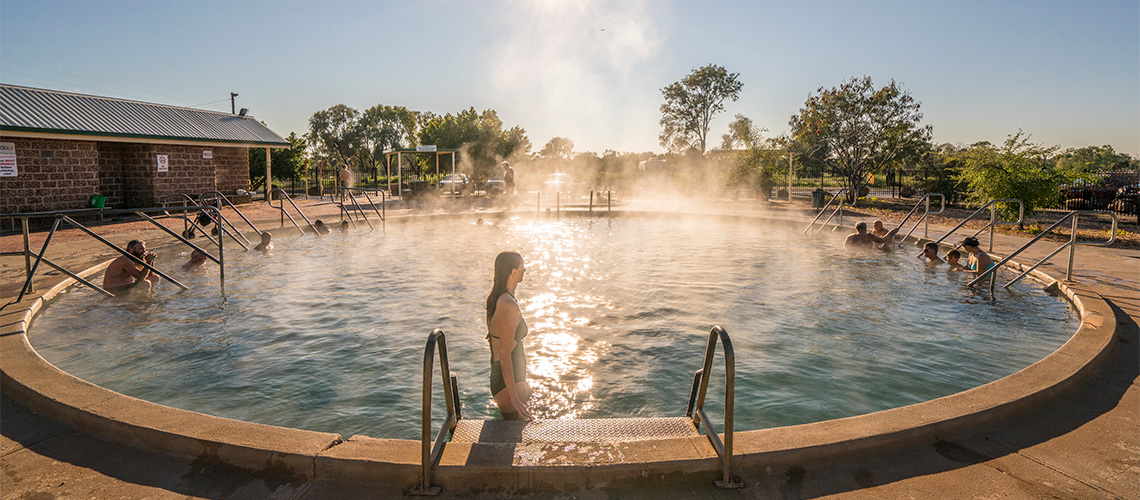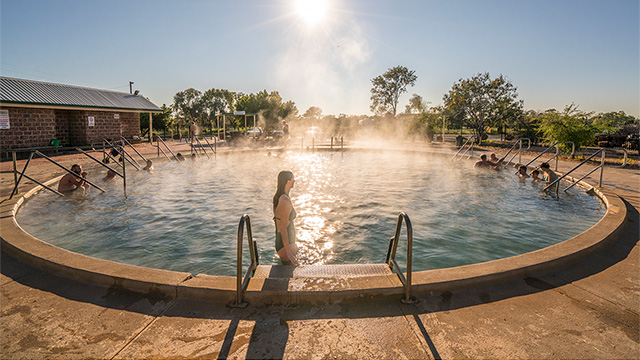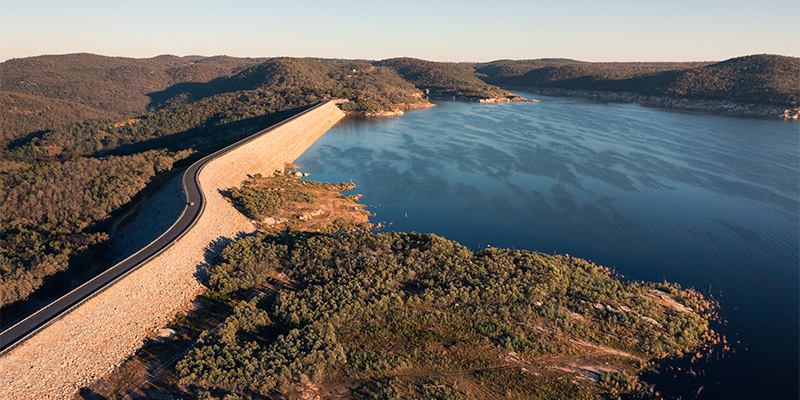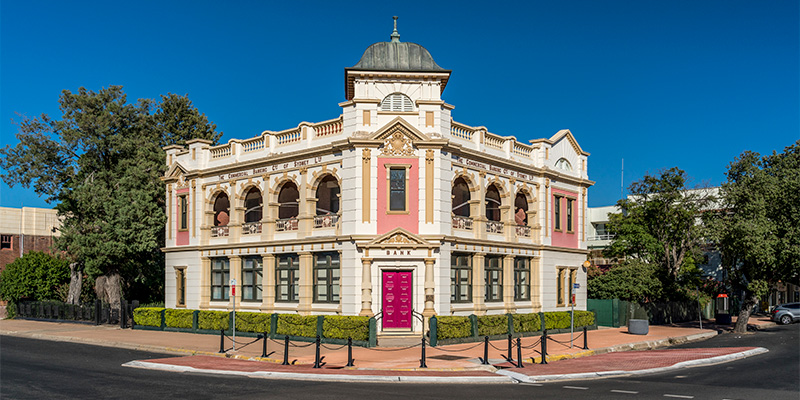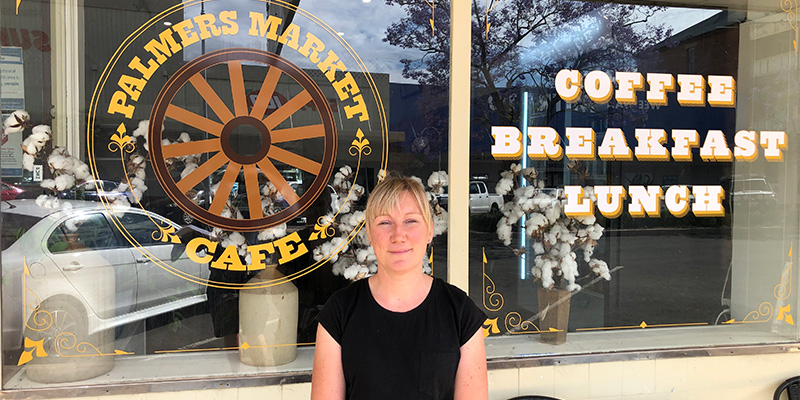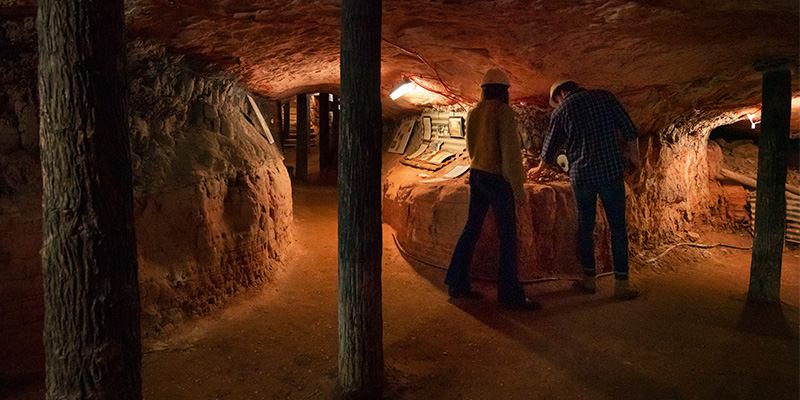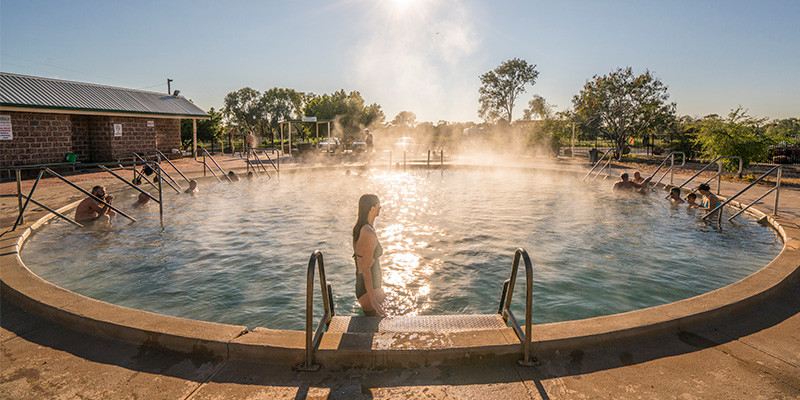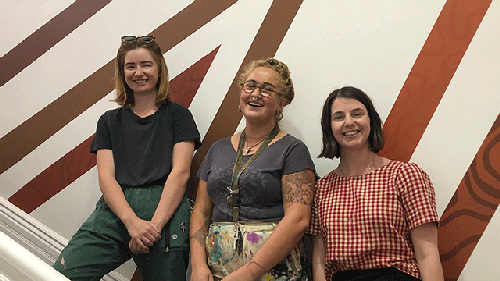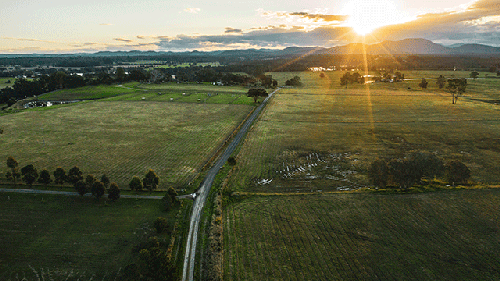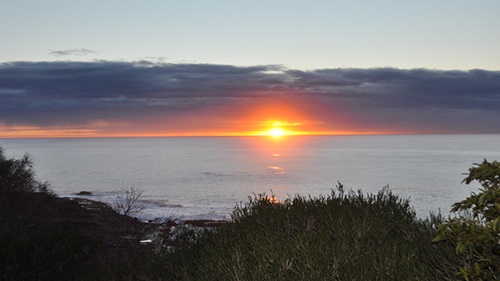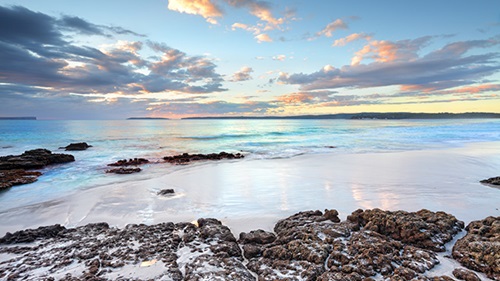Though technically not situated within the Great Artesian Basin region, the first leg of the road trip is filled with other natural wonders.
Past rolling hills and paddocks, Thunderbolts Way is the perfect touring road. Seeing plenty of water in dams and feed for stock makes a fantastic change from previous times.
Heeding the turn-off sign to Mount Yarrowyck Nature Reserve on an impulse is rewarded with a relaxing pit stop. Along with tables, barbecues and a toilet, there’s a pleasant 3km return walk to an Aboriginal rock art site featuring red ochre paintings with bird track motifs, though sturdy shoes are recommended as the trail can be uneven and inclined in places.







